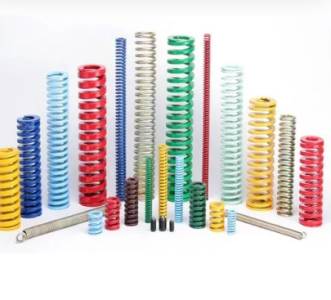
Die springs, also known as flat springs or power springs, are high-performance springs designed for demanding applications requiring consistent force over a large deflection range. Unlike coil springs, die springs offer a unique combination of features that make them ideal for specific uses. This detailed description will explore their characteristics, applications, and benefits.
What are Die Springs?
Die springs are manufactured from flat strip stock material, precisely stamped and formed into a specific shape. This shape, usually a series of closely spaced coils or loops, provides a significant force relative to their size. Their design allows for a high energy density and a relatively large deflection before reaching their ultimate stress limit.
Key Features and Benefits:
Materials:
Die springs are typically manufactured from high-strength spring steel, providing excellent fatigue resistance and reliability. Other materials like stainless steel and various specialty alloys may be used to meet specific corrosion resistance or temperature requirements.
Applications:
Die springs find applications across a wide range of industries, including:
Specifications:
When ordering die springs, you will need to specify several key parameters:
Choosing the Right Die Spring:
Selecting the appropriate die spring requires careful consideration of the application's specific requirements. Consult with a spring design specialist to ensure you choose the spring with the right force, deflection, and durability for your specific application. Accurate load and deflection calculations are critical to ensure safe and effective operation.
Conclusion:
Die springs are highly versatile and reliable components offering a unique combination of energy density, consistent force, and large deflection capabilities. Their customizable design and robust construction make them an ideal choice for a wide range of demanding applications where precision and reliability are paramount. Understanding their key features and specifications is crucial for selecting the right die spring for your project.